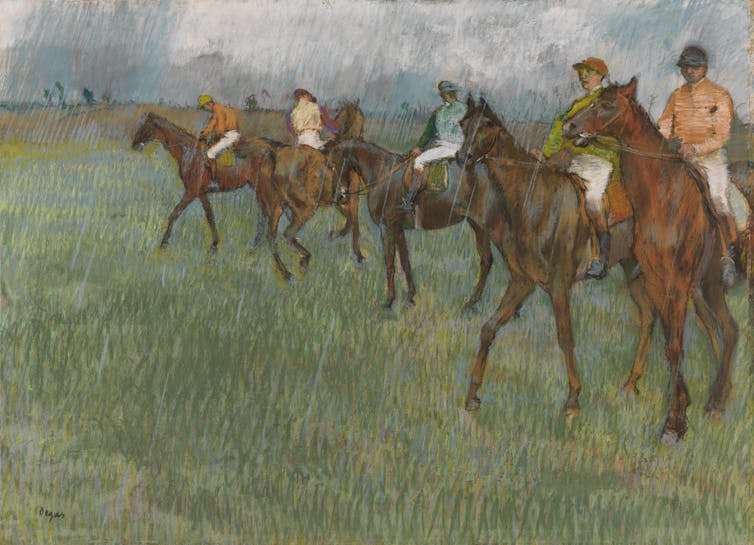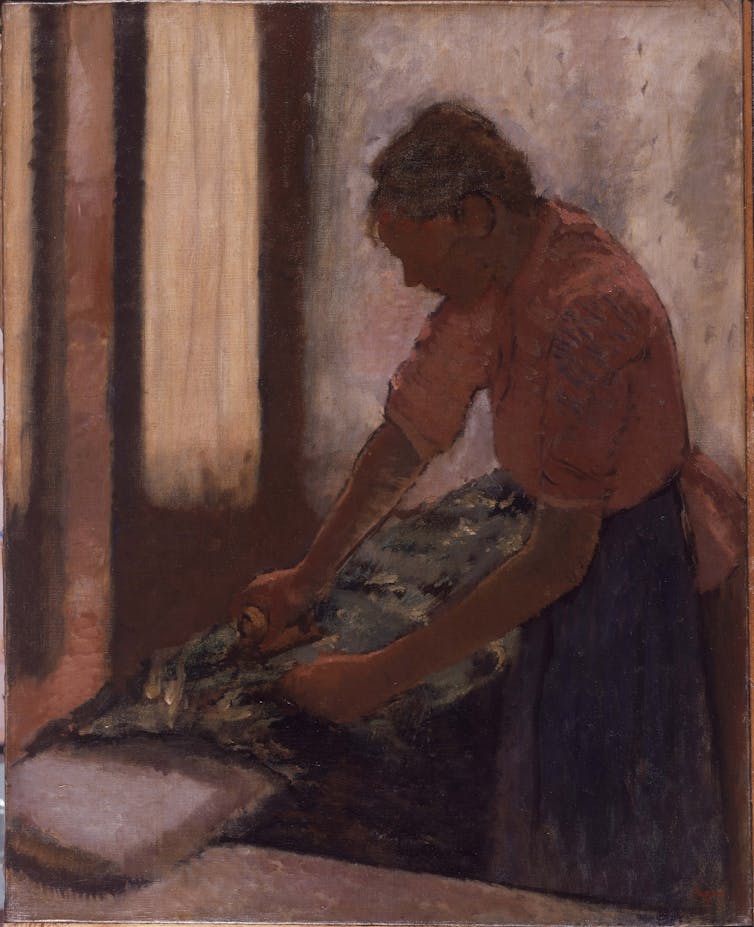In 1891, an exhibition titled A Small Collection of Works by Degas and Others opened in London, before travelling up to Glasgow. It was organised by the Scottish art dealer Alexander Reid, who had recently returned from Paris.
During the entire run of the exhibition, only one work by the French impressionist artist Edgar Degas was sold. Impressionism was still considered deeply problematic for most members of the British public, and some of the works on show were criticised for their “distressing ugliness”.
Today, by contrast, the public queues round the block to see the work of Degas and his contemporaries.
This year marks the 150th anniversary of the first impressionist exhibition, and the movement is being celebrated not only in France but major cities across the world – including Glasgow, where Discovering Degas, an exhibition celebrating the taste for Degas’ work in Britain, has just opened.
The venue is the recently refurbished Burrell Collection, which boasts no fewer than 22 works by the artist, all acquired by the Glasgow shipbuilder and art collector Sir William Burrell.
This is the first major show at the Burrell since the gallery was named Art Fund Museum of the Year in 2023. Visitors will be able to admire more than 50 works by Degas in the context of the wider British taste for this artist.
Paintings, pastels and sculpture
The market for Degas’ art was established in England thanks to the French dealer Paul Durand-Ruel, who fled to London in 1870 during the Franco-Prussian war. He rented a gallery in New Bond Street, where he initially showed the work of Claude Monet and Camille Pissarro – also exiles in the capital.
Degas saw the opportunity to establish a new clientèle for his art and was delighted when a retired military tailor, Henry Hill, bought no fewer than seven works. After his death, Hill’s collection was sold at Christie’s; one of the pictures, known today as L’Absinthe (Musée d’Orsay), was hissed at when it appeared on the podium.

Set in the Café de la Nouvelle-Athènes, a favourite meeting place for the mpressionists on rue Pigalle in Paris, the painting shows a woman slumped at a table; in front, a glass of absinthe. This highly addictive drink caused hallucinations and long-term health problems and was considered deeply inappropriate as a subject for art. Despite this, the painting was bought by Reid, who then sold it almost immediately to Glasgow businessman Arthur Kay.
This and many other paintings are included in Discovering Degas. A major theme of the show is the ballet, for Degas had a subscription to the Paris Opera and was permitted to sketch the dancers rehearsing or standing in the wings.
When painting an actual performance, he preferred to view the stage from an unusual or unexpected angle. He adopted the same approach in his paintings, pastels and drawings of racehorses, preferring to show the jockeys warming up before a race rather than the excitement of the finish.

Degas’ portraits, too, challenge tradition. Among the exhibition highlights are his portraits of the art critics Edmond Duranty and Diego Martelli. Duranty’s essay The New Painting (1876) highlighted Degas’s habit of situating his sitters in their environment and adopting a “bird’s eye view”. This is most obvious in the painting of Martelli, who has turned away from the chaotic pile of papers on his desk and is lost in thought.
This particular work, on loan from the National Galleries of Scotland, was once in the collection of Elizabeth Workman, a champion yachtswoman whose husband, Robert Workman (like Burrell) was a wealthy ship owner. She began collecting the work of Degas before the artist’s death in 1917, after which a large number of pictures were released onto the market.
As the exhibition and accompanying catalogue explain, it was in the 1920s, following the disruption of the first world war, that a taste for Degas’ work was really established in Britain. In 1922 and 1923, the Leicester Galleries in London held two solo shows of Degas’ work, focusing in the later exhibition on the bronze sculptures that were produced retrospectively by the Hébrard foundry.
During his lifetime, Degas exhibited only one sculpture, the Little Fourteen-Year-Old Dancer (Tate). In the main, he used this medium as a means of working out the complex movements of the dancers, racehorses or women washing that would reappear in his paintings.

Although the bronzes were popular with several collectors – among them Welsh sisters Gwendoline and Margaret Davies – Burrell showed no interest, despite his love of the sculptor Auguste Rodin. His taste was primarily for pastels, a medium at which Degas excelled and for which he is admired today.
What this exhibition reveals, then, is not only the innovative and experimental nature of the artist’s work, but the foresight and boldness of these early collectors, including Burrell, in investing in his work.

